
Alex Cobham ■ Tax Justice Network warns at the UN against subversion of Sustainable Development Goals
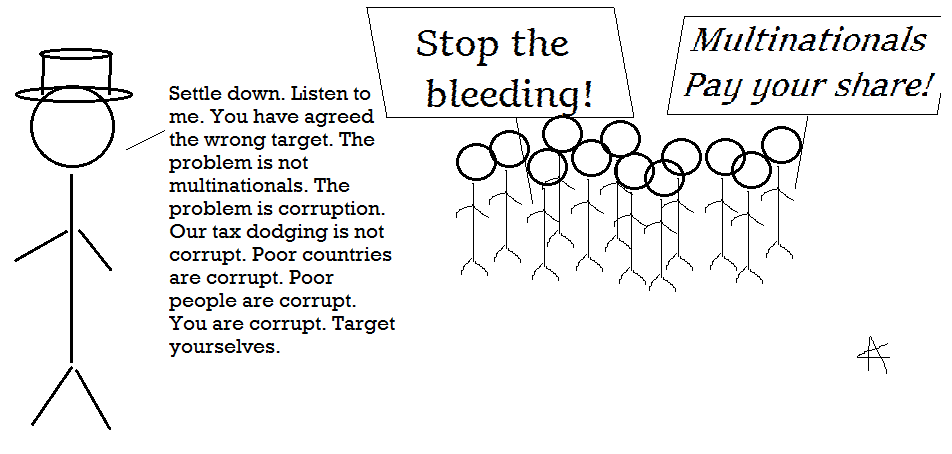
Last week the Tax Justice Network director Alex Cobham was invited to the United Nations in New York to address the ECOSOC Financing for Development Forum. Here are his remarks, which highlight a major threat to the Sustainable Development Goals target to reduce illicit financial flows. And what’s that threat? A concerted effort to remove multinational tax avoidance from the scope. In fact, there’s been some very active lobbying in order to exempt corporate tax dodging from the ‘illicit financial flows’ definition.
This is life and death stuff.
The session also included high level speakers from Nigeria, the US and the Economic Commission for Africa, and a Q&A with contributions from Ghana, Ethiopia, Ecuador and South Africa. The panel begins around 1:34:30 in; Alex’s remarks at 2:12:00. A referenced transcript of Alex’s remarks is below, and can also be downloaded along with other presenters’ slides from the UN website.
The significance and subversion of SDG 16.4: Multinational tax avoidance as IFF
This is a referenced transcript of Alex’s remarks delivered at United Nations in New York on 25 May 2017 to the 2017 ECOSOC Forum on Financing for Development follow-up, at a panel entitled: “Promoting international cooperation to combat illicit financial flows in order to foster sustainable development”.
*
Thank you and good morning. I was going to talk through a set of technical slides about the ways in which we can measure, or find good proxies for, illicit financial flows. But I am seized of a political urgency to talk to you about something else, so I am not going to use my slides.
The Tax Justice Network, just as background, was established in 2003 as an expert network of economists, lawyers, accountants, political scientists, and a range of other experts, who shared a common sense that the international policy discussions in the areas of tax and financial transparency did not really reflect the scale and the nature of the problems faced – for lower-income countries but also for high-income countries. And over time, that’s the agenda that we’ve promoted, and the policy solutions – which were initially written off as utopian and unrealistic – have come to be the basis of the international policy agenda, and I’ll talk through that a little.[i]
Worsening inequalities in global taxing rights
But the issue we have is that those policies, although now increasingly discussed and within this agenda on illicit flows also, have not yet been delivered in a way which ensures full inclusion – and so the benefits so far have overwhelmingly accrued to high-income countries. In fact, by only going a certain distance with this agenda we’ve actually exacerbated the global inequalities in taxing rights that lower-income countries suffer.
Now, the political threat about which I would like to raise the alarm in this forum is an attempt to subvert the global political agreement that underpins the Sustainable Development Goals target on illicit flows. Let me explain.
Biased perceptions of corruption, and the role of financial secrecy
The illicit flows agenda emerged in a fair degree as an opposition to a view of corruption which saw corruption as a problem in developing countries overwhelmingly. In 2007 we began to work on the Financial Secrecy Index, which identifies major financial jurisdictions like Switzerland – which typically does very well in perceptions of corruption – as central to the problem of producing and promoting corrupt flows elsewhere.[ii] And if we continue with a narrative that sees corruption in lower-income countries only, we miss this central driver of the problem.
Now the illicit flows agenda, the reason it’s important, the reason it’s such a big step forward to have it in the SDGs, is that it’s exactly a reaction to this biased perception of corruption. It recognises the centrality of financial secrecy to the undermining of revenues, the undermining of good governance in countries all around the world – and rather than saying ‘Why is your country corrupt?’, it says, ‘What are the drivers of corruption?’
And in particular, that’s the financial secrecy which is largely in the biggest financial centres of the world, underpinning every major case of corruption that we find around the world, every major case of tax abuse. We find anonymously owned companies, from the British Virgin Islands to Delaware. We find opaque corporate accounting, typically in the biggest stock markets in the world, that cover the degree of profit-shifting and tax avoidance. And we find deliberate failures to exchange financial information that protect, even now, banking secrecy.
The US has played a very important role, as Eric mentioned,[iii] in breaking the Swiss commitment to complete banking secrecy. But Switzerland, like many other countries, has signed up to the OECD’s multilateral process for information exchange, without agreeing to provide information to more than a handful of lower-income countries, because they simply don’t have the same threat that the US does.[iv] This session is around promoting international cooperation, and international cooperation is key here: to require a fully multilateral approach.
The threat to subvert SDG 16.4
Now the threat is very clear. We see increasingly, not least within the process now ongoing to develop targets within the SDGs on illicit flows, an attempt to remove multinational tax avoidance from the definition of illicit financial flows – despite the fact that that is, within almost every estimate we have, the biggest element of illicit flows in most countries. It is the underpinning of trade misinvoicing in many cases, and through work of researchers at the IMF, or us at the Tax Justice Network, and many others, we find it is a bigger problem in LICs both as a share of GDP, and the resulting impact as a share of revenues.[v] And yet: this is now under pressure to be removed from the target.
The remaining problem, I think, is that there is – despite the global agreement following the work of the High Level Panel on Illicit Flows out of Africa, and also the high Level Panel co-chaired by David Cameron, reporting to the then Secretary-General – avoidance is central to the definition used of illicit financial flows, and so when SDG 16.4 was agreed, there was no question that avoidance was included.[vi] But what we see now is an attempt to remove it, by organisations unfortunately including the International Monetary Fund that does not see it as part of issues of significance, but also by very active corporate lobbying.
Where we are left is a position where it is entirely possible that the process to define the target on illicit financial flows may subvert the expressed global agreement contained in the Sustainable Development Goals.
I would like to talk to you about the transparency measures which we could use to construct IFF targets that would ensure accountability in countries at all income levels for their role – rather than simply putting the pressure back on lower-income countries to fight corruption domestically, which is important but insufficient. But those transparency measures really are only of value if we can maintain the agreement that avoidance is a fundamental part of the illicit flows agenda.
At that point, looking at:
- automatic exchange of financial information;
- beneficial ownership transparency of companies, trusts and foundations; and
- ensuring public country-by-country reporting by multinationals, so that the difference between where profits are declared, and where actual economic activity takes places and be managed down;
becomes a viable agenda that will deliver enormous revenue and political governance benefits around the world.[vii]
But if that battle is lost in the definition of the illicit flows target, much of that will be in vain and we’ll be looking again at whether the UN can establish a tax commission to take responsibility here for those avoidance issues, having lost it despite the agreement in the SDGs.
Endnotes
[i] A brief overview of progress since the Tax Justice Network’s formal establishment in 2003 can be found at http://bit.ly/tjnJC.
[ii] The Financial Secrecy Index is published every two years, and ranks jurisdictions according to the secrecy and scale of their global exports of financial services, on the basis of 48 objectively verifiable indicators. Switzerland currently ranks as the most important financial secrecy jurisdiction. See Cobham, A., Janský, P. and Meinzer, M. (2015), ‘The Financial Secrecy Index: Shedding New Light on the Geography of Secrecy’, Economic Geography 91: 281–303. doi:10.1111/ecge.12094, or open access via https://www.taxjustice.net/2015/06/01/tax-justice-research-bulletin-15-2/.
[iii] Eric Hylton, Executive Director of International Operations, Internal Revenue Service – Criminal Investigations, United States.
[iv] See recent updates on the automatic exchange process, including risks inherent in bilateral approaches, in A. Knobel & M. Meinzer, 2017, ‘Delivering a level playing field for offshore bank accounts: What the new OECD/Global Forum peer reviews on automatic information exchange must not miss’, Tax Justice Network/Financial Transparency Coalition Briefing: https://www.taxjustice.net/wp-content/uploads/2013/04/TJN_AIE_ToR_Mar-1-2017.pdf; and on the Swiss approach at https://www.taxjustice.net/2016/11/28/switzerland-information-exchange-tweak-tweak-something-will-always-remain/.
[v] The term ‘illicit financial flows’ was popularised by Raymond Baker, an American businessman who was so shocked by the degree of profit shifting by multinationals he encountered while working in a number of sub-Saharan African countries that he subsequently wrote a book, Capitalism’s Achilles Heel (John Wiley, 2005), and established the NGO Global Financial Integrity to challenge the abuses. In Baker’s assessment, grand corruption accounted for just a few per cent of illicit flows, and laundering of the proceeds of crime between a quarter and a third. The largest component by far was ‘commercial tax evasion’, through the manipulation of trade prices, accounting for around two thirds of the problem.
While Baker (quite reasonably) views all of the latter activity as illegal (and GFI’s definition follows from this), it is clear that much that has been labelled multinational tax avoidance by others would be included. Baker also sat on the High Level Panel on Illicit Financial Flows out of Africa, which put avoidance squarely at the forefront of their scrutiny: “The various means by which IFFs take place in Africa include abusive transfer pricing, trade mispricing, misinvoicing of services and intangibles and using unequal contracts, all for purposes of tax evasion, aggressive tax avoidance and illegal export of foreign exchange.” (p.24)
Turning to the estimates of scale, GFI’s reliance on discrepancies in national-level trade has been criticised for inflating the resulting IFF estimates (see e.g. the work of trade specialists Simon Pak and Volker Nitsch), but the top line findings indicate gross outflows from all lower-income countries of $620 billion to $970 billion in the most recent year. In the meantime, analysis of profit shifting by IMF researchers, and application of the same approach to stronger data by the Tax Justice Network (A. Cobham & P. Janský, 2017, ‘Global Distribution Of Revenue Loss From Tax Avoidance: Re-Estimation And Country Results’, WIDER Working Paper 2017/55: https://www.wider.unu.edu/publication/global-distribution-revenue-loss-tax-avoidance), indicate revenue losses to developing countries over $200 billion a year. Assuming an average tax rate of 25% would imply that profit-shifting is at least equal to the total of GFI’s IFF estimates. Allowing for the possibility either that GFI’s estimates are inflated, as claimed; or that they do indeed contain some component of multinational tax avoidance, as seems inevitable; it would then follow that avoidance provides the largest single component of illicit financial flows.
Finally, the same avoidance estimates indicate losses of just a few percent of all tax revenue in OECD, but 6-13% in lower-income countries: a much more significant cost to those countries that have been largely excluded from OECD attempts to reform the deeply flawed international tax rules.
[vi] There are three main reasons why multinational tax avoidance should be considered a central component of IFFs. First, definitional: ‘illicit’ is not synonymous with illegal’. Any dictionary defines ‘illicit’ as meaning ‘illegal’ or forbidden by custom. What large scale tax avoidance has in common with evasion, apart from the resulting revenue losses, is that multinationals seek secrecy to hide their actions – in this case through active lobbying to prevent having to publish country-by-country reporting, and through the use of secrecy jurisdictions to obscure key parts of the process. Secondly, as noted, there is a practical reason to include avoidance – it is not only likely to be a large part of the problem of IFF, but may also be disproportionately open to reduction (since only political will is required to ensure profits are declared in proportion to the share of real economic activity in a given jurisdiction). By far the most important reason to retain avoidance within the IFF definition, however, is the political one: there is no question that those signing up to the SDG agreement to include target 16.4, did so in the belief that avoidance was included. Per endnote v above, the key texts (the two High Level Panel reports) both contain multiple references to and discussion of avoidance – as did the contemporaneous political discussions. Excluding avoidance now would be a clear subversion of the agreement.
[vii] These three bullet points, the ABC of tax transparency which formed the policy platform initially laid out by the Tax Justice Network in 2003-05, can also provide the basis for powerful indicators for SDG 16.4. There are two risks with currency estimates of the scale of IFF. First, the leading estimates are subject to substantial degrees of uncertainty, given the general data problems in this area, and the specific difficulties of seeking to measure phenomena which are deliberately hidden. Second, the risk of using scale estimates is that the attribution and possibility the accountability would rest only with the country suffering the illicit flows. An alternative or complementary approach is laid out in A. Cobham, 2014, ‘Illicit Financial Flows Assessment Paper: Benefits and costs of the IFF targets in the post-2015 development agenda’, Copenhagen Consensus Center: http://bit.ly/CC-PDF. Here it is proposed that each country be monitored according to their performance on the ABC: the proportion of the world with which they have automatic exchange of financial information; the share of their companies, trusts and foundations for which beneficial ownership information is publicly available; and the proportion of their multinationals which are required to publish their country-by-country reporting data. In this way, the SDG target would track the origins of illicit flows, in terms of the enabling financial secrecy – instead of supporting the discredited narrative of corruption as just a lower-income country problem.
Related articles
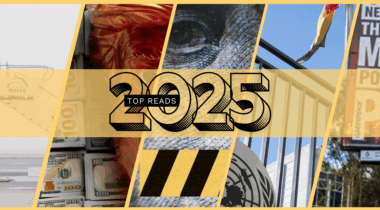
The tax justice stories that defined 2025

Admin Data for Tax Justice: A New Global Initiative Advancing the Use of Administrative Data for Tax Research

2025: The year tax justice became part of the world’s problem-solving infrastructure

Two negotiations, one crisis: COP30 and the UN tax convention must finally speak to each other
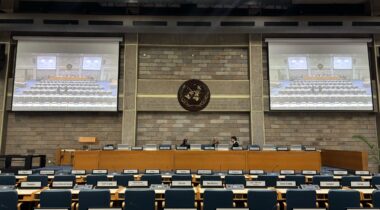
‘Illicit financial flows as a definition is the elephant in the room’ — India at the UN tax negotiations

Taxation as Climate Reparations: Who Should Pay for the Crisis?
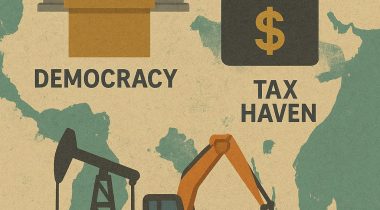
Tackling Profit Shifting in the Oil and Gas Sector for a Just Transition
The State of Tax Justice 2025

Follow the money: Rethinking geographical risk assessment in money laundering



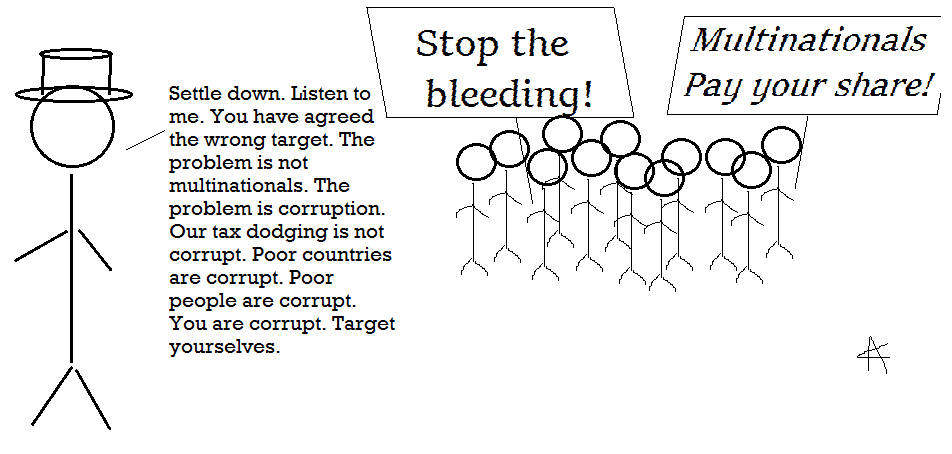
Much as i can see the value in eliminating the problems of multi-tax regimes, I find it better to eliminate the whole regime and to replace it with a single, unavoidable and socially just tax. the following essay explains what it is and how it works.
Socially Just Taxation and Its Effects (17 listed)
Our present complicated system for taxation is unfair and has many faults. The biggest problem is to arrange it on a socially just basis. Many companies employ their workers in various ways and pay them diversely. Since these companies are registered in different countries for a number of categories, the determination the criterion for a just tax system becomes impossible, particularly if based on a fair measure of human work-activity. So why try when there is a better means available, which is really a true and socially just method?
Adam Smith (“Wealth of Nations”, 1776) says that land is one of the 3 factors of production (the other 2 being labor and durable capital goods). The usefulness of land is in the price that tenants pay as rent, for access rights to the particular site in question. Land is often considered as being a form of capital, since it is traded similarly to other durable capital goods items. However it is not actually man-made, so rightly it does not fall within this category. The land was originally a gift of nature (if not of God) for which all people should be free to share in its use. But its site-value greatly depends on location and is related to the community density in that region, as well as the natural resources such as rivers, minerals, animals or plants of specific use or beauty, when or after it is possible to reach them. Consequently, most of the land value is mostly created by man within his society and therefore its advantage should logically and ethically be returned to the community for its general use, as explained by Martin Adams (in “LAND”, 2015).
However, due to our existing laws, land is owned and formally registered and its value is traded, even though it can’t be moved to another place, like other kinds of capital goods. This right of ownership gives the landlord a big advantage over the rest of the community because he determines how it may be used, or if it is to be held out of use, until the city grows and the site becomes more valuable. Thus speculation in land values is encouraged by the law, in treating a site of land as personal or private property—as if it were an item of capital goods, although it is not (Mason Gaffney and Fred Harrison: “The Corruption of Economics”, 2005).
Regarding taxation and local community spending, the municipal taxes we pay are partly used for improving the infrastructure. This means that the land becomes more useful and valuable without the landlord doing anything—he/she will always benefit from our present tax regime. This also applies when the status of unused land is upgraded and it becomes fit for community development. Then when this news is leaked, after landlords and banks corruptly pay for this information, speculation in land values is rife. There are many advantages if the land values were taxed instead of the many different kinds of production-based activities such as earnings, purchases, capital gains, home and foreign company investments, etc., (with all their regulations, complications and loop-holes). The only people due to lose from this are those who exploit the growing values of the land over the past years, when “mere” land ownership confers a financial benefit, without the owner doing a scrap of work. Consequently, for a truly socially just kind of taxation to apply there can only be one method–Land-Value Taxation.
Consider how land becomes valuable. New settlers in a region begin to specialize and this improves their efficiency in producing specific goods. The central land is the most valuable due to easy availability and least transport needed. This distribution in land values is created by the community and (after an initial start), not by the natural resources. As the city expands, speculators in land values will deliberately hold potentially useful sites out of use, until planning and development have permitted their values to grow. Meanwhile there is fierce competition for access to the most suitable sites for housing, agriculture and manufacturing industries. The limited availability of useful land means that the high rents paid by tenants make their residence more costly and the provision of goods and services more expensive. It also creates unemployment, causing wages to be lowered by the monopolists, who control the big producing organizations, and whose land was already obtained when it was cheap. Consequently this basic structure of our current macroeconomics system, works to limit opportunity and to create poverty, see above reference.
The most basic cause of our continuing poverty is the lack of properly paid work and the reason for this is the lack of opportunity of access to the land on which the work must be done. The useful land is monopolized by a landlord who either holds it out of use (for speculation in its rising value), or charges the tenant heavily for its right of access. In the case when the landlord is also the producer, he/she has a monopolistic control of the land and of the produce too, and can charge more for this access right than what an entrepreneur, who seeks greater opportunity, normally would be able to afford.
A wise and sensible government would recognize that this problem derives from lack of opportunity to work and earn. It can be solved by the use of a tax system which encourages the proper use of land and which stops penalizing everything and everybody else. Such a tax system was proposed 136 years ago by Henry George, a (North) American economist, but somehow most macro-economists seem never to have heard of him, in common with a whole lot of other experts. (I would guess that they don’t want to know, which is worse!) In “Progress and Poverty” 1879, Henry George proposed a single tax on land values without other kinds of tax on produce, services, capital gains etc. This regime of land value tax (LVT) has 17 features which benefit almost everyone in the economy, except for landlords and banks, who/which do nothing productive and find that land dominance has its own reward.
17 Aspects of LVT Affecting Government, Land Owners, Communities and Ethics
Four Aspects for Government:
1. LVT, adds to the national income as do other taxation systems, but it replaces them.
2. The cost of collecting the LVT is less than for all of the production-related taxes–tax avoidance becomes impossible because the sites are visible to all.
3. Consumers pay less for their purchases due to lower production costs (see below). This creates greater satisfaction with the management of national affairs.
4. The national economy stabilizes—it no longer experiences the 18 year business boom/bust cycle, due to periodic speculation in land values (see below).
Six Aspects Affecting Land Owners:
5. LVT is progressive–owners of the most potentially productive sites pay the most tax.
6. The land owner pays his LVT regardless of how his site is used. A large proportion of the ground-rent from tenants becomes the LVT, with the result that land has less sales-value but a significant “rental”-value (even when it is not used).
7. LVT stops speculation in land prices and the withholding of land from proper use is not worthwhile.
8. The introduction of LVT initially reduces the sales price of sites, even though their rental value can still grow over a longer term. As more sites become available, the competition for them is less fierce.
9. With LVT, land owners are unable to pass the tax on to their tenants as rent hikes, due to the reduced competition for access to the additional sites that come into use.
10. With LVT, land prices will initially drop. Speculators in land values will want to foreclose on their mortgages and withdraw their money for reinvestment. Therefore LVT should be introduced gradually, to allow these speculators sufficient time to transfer their money to company-shares etc., and simultaneously to meet the increased demand for produce (see below).
Three Aspects Regarding Communities:
11. With LVT, there is an incentive to use land for production or residence, rather than it being unused.
12. With LVT, greater working opportunities exist due to cheaper land and a greater number of available sites. Consumer goods become cheaper too, because entrepreneurs have less difficulty in starting-up their businesses and because they pay less ground-rent–demand grows, unemployment decreases.
13. Investment money is withdrawn from land and placed in durable capital goods. This means more advances in technology and cheaper goods too.
Four Aspects About Ethics:
14. The collection of taxes from productive effort and commerce is socially unjust. LVT replaces this extortion by gathering the surplus rental income, which comes without any exertion from the land owner or by the banks– LVT is a natural system of national income-gathering.
15. Bribery and corruption on information about land cease. Before, this was due to the leaking of news of municipal plans for housing and industrial development, causing shock-waves in local land prices (and municipal workers’ and lawyers’ bank balances).
16. The improved use of the more central land reduces the environmental damage due to a) unused sites being dumping-grounds, and b) the smaller amount of fossil-fuel use, when traveling between home and workplace.
17. Because the LVT eliminates the advantage that landlords currently hold over our society, LVT provides a greater equality of opportunity to earn a living. Entrepreneurs can operate in a natural way– to provide more jobs. Then earnings will correspond to the value that the labor puts into the product or service. Consequently, after LVT has been properly introduced it will eliminate poverty and improve business ethics.